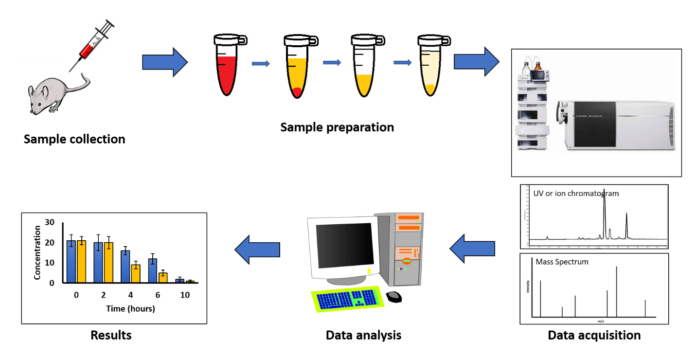Liquid chromatography-mass spectrometry (LC-MS) testing has greatly impacted drug development and discovery . Primarily, tandem mass spectrometry detection (LC-MS/MS) is employed increasingly in several phases of drug development. Besides, continuous upgrades in the LC-MS interface have opened a wide array of applications in the pharmaceutical domain.
Due to enhanced sensitivity, specificity, and selectivity, LC-MS/MS analysis is widely used in biomedical sciences. In drug development, lc ms analysis systems help discover, characterize and identify drug and drug metabolites in study samples. Moreover, advancements in retention times have increased LC-MS’s use from drug identification to final marketed drug products. This article can guide researchers in assessing the future and applications of LC-MS/MS method development and analysis. The objective is to highlight the trends and developments in LC-MS/MS analysis.
Trends and development in LC-MS/MS analysis
LC-MS assays have been regularly used to make informed critical decisions in drug discovery and development projects. Hence, there is a continuous need to improve assay efficiency and reliability to make better-informed decisions. This need for clarity in decision-making has driven the use of LC-MS systems and has increased the requirement for a more robust, reliable, and reproducible assay system. Besides the desire for automated systems, data processing and reporting units have also driven the need for further technological developments in LC-MS/MS systems.
Earlier, LC-MS systems were only accessible to a particular population of trained scientists. However, this scenario has changed now. Today an increasing number of scientists are using LC-MS assays without worrying about assay technology and working on their objectives with confidence in LC-MS functionality. Besides, automation and generation of robust results have made LC-MS/MS systems more user-friendly.
Several researchers use ultrahigh performance liquid chromatography (UHPLC). This demand has made UHPLC the leading instrument in the LC-MS market. UHPLC is prominently used in drug discovery research. However, the current trend suggests that UHPLC is transitioning into a more fit-for-purpose HPLC.
Moreover, LC-MS/MS analysis is used rapidly to assess complex biotherapeutic molecules, making it a more routine laboratory technique. As pharmaceutical companies shift their focus on novel biological products, it will directly impact the development of novel solutions in LC-MS technology to meet the complex demands of these advanced pharmaceutical therapies.
Ultra-fast mass spectrometry enhances the speed of analysis and improves the workflow of routine bioanalytical laboratories. With the combination of LC-MS systems and ultra-fast mass spectrometry, the challenges in sample analysis have now moved on to sample preparation. Besides, due to the lack of cost associated with a workforce , sponsors are forced to incorporate automated systems for sample preparation. This system means implementing automatic pretreatment steps for biological fluids. However, this approach will give rise to another challenge: an extensive amount of clinical data. Although researchers can employ artificial intelligence solutions to process and review such high amounts of clinical data.
Hence, with newer technological advancements, LC-MS/MS systems will be at the forefront of tackling several challenges in drug development processes. However, LC-MS method development and validation will be the foundational pillars for reliable assay results.
















